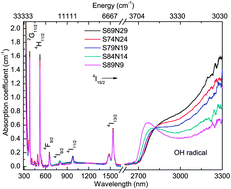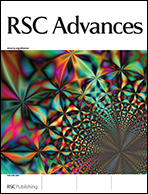Effect of Na2O concentration on the lifetime of Er3+-doped sodium silicate glass
Abstract
A set of sodium silicate glass matrices with different Na2O concentrations and doped with constant Er3+ content were synthesized by fusion. The influence of Na2O on the luminescence of Er3+ ions in the region of 1.53 μm was studied. Samples were characterized by optical absorption (OA), time and energy resolved photoluminescence and Fourier Transform Infrared (FTIR). Sodium oxide concentration controls the absorption of OH radicals. FTIR showed a decrease in OH radicals, which is correlated with an increase in the lifetime of the transition at approximately 1.53 μm. However, a decrease in sodium concentration implies increasing interaction between the silicon network and Er3+ ions, thereby increasing non-radiative energy transfer from Er3+ ions to SiO4 structures. The gain in the lifetime of this transition (∼6.9 ms) was obtained for the sample with the highest silicon concentration and is comparable with the well-known YAG system. Molecular dynamic results show that a reduction in non-bridging oxygen species occurs as Na2O concentration decreases, which explains the reduction in OH radical absorption obtained in the experimental results.


 Please wait while we load your content...
Please wait while we load your content...